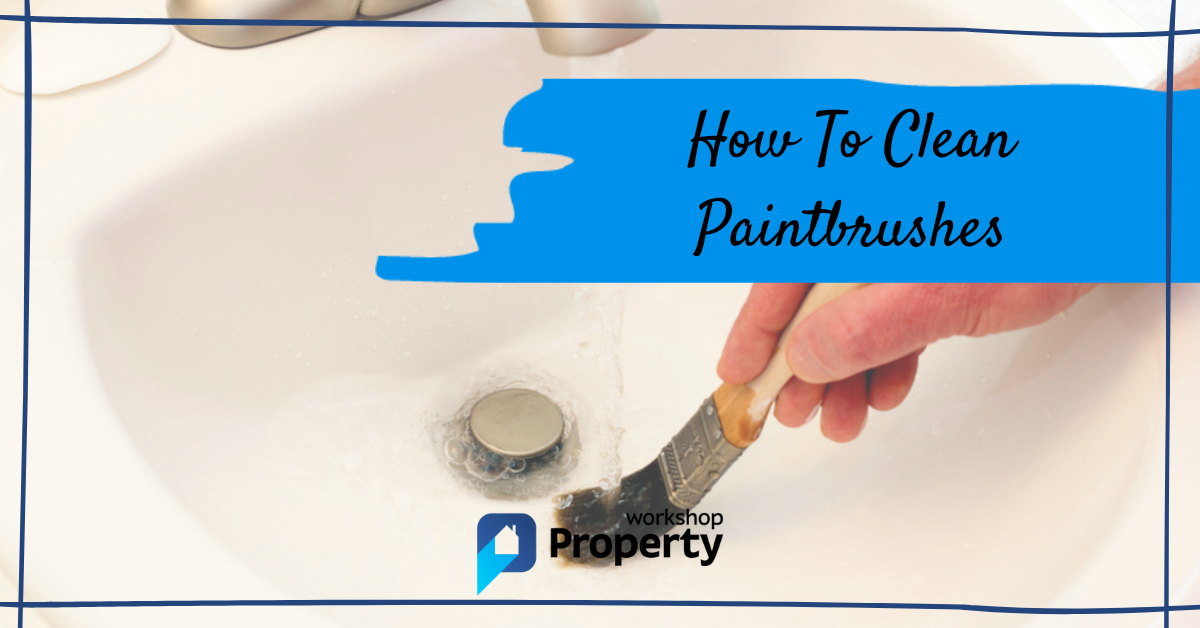From a young age, I learned that good workers always look after their tools, including the humble paintbrush.
In this guide, I’ll show you how to clean paintbrushes like a professional decorator, including hints and tips for prolonging their useful life. I also recommend some cheap and easy methods for storing paintbrushes at home.
Tools and Materials
Gather all the tools and materials below before cleaning your paintbrushes.
Tools
- Paintbrush
- Bucket
- Clean container (an old jar will do)
- Paintbrush and roller spinner
- Brush comb
Materials
- Newspaper
- White spirit/turpentine
- Washing up liquid
- Hot water
- Rags
How To Clean Paintbrushes — Removing Wet Paint
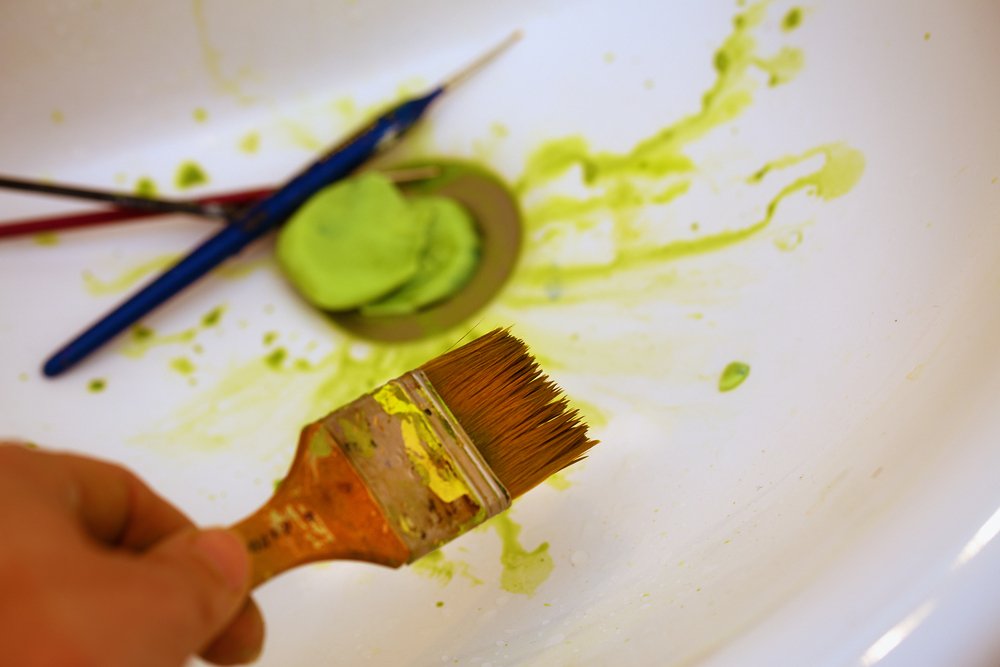
To clean paintbrushes like a pro, follow the five steps below.
1. Squeeze Out Brush
Press the bristles against the inside of the paint tin and drag it upwards towards the tin’s lip. The excess paint runs off the bristles back into the tin. Do the same for both sides of the brush.
Lay down some old newspaper and run the brush over it to remove as much paint as possible. When the transfer of pigment from the bristles to the newspaper diminishes, move to the next step.
2. Follow Instructions
Read the instructions on the paint tin to decide which cleaning solution you need. It differs depending on the type of paint you use.
- Use white spirit or turpentine for oil-based paint.
- Use washing-up detergent and hot water for water-based paint.
3. Immerse Brush
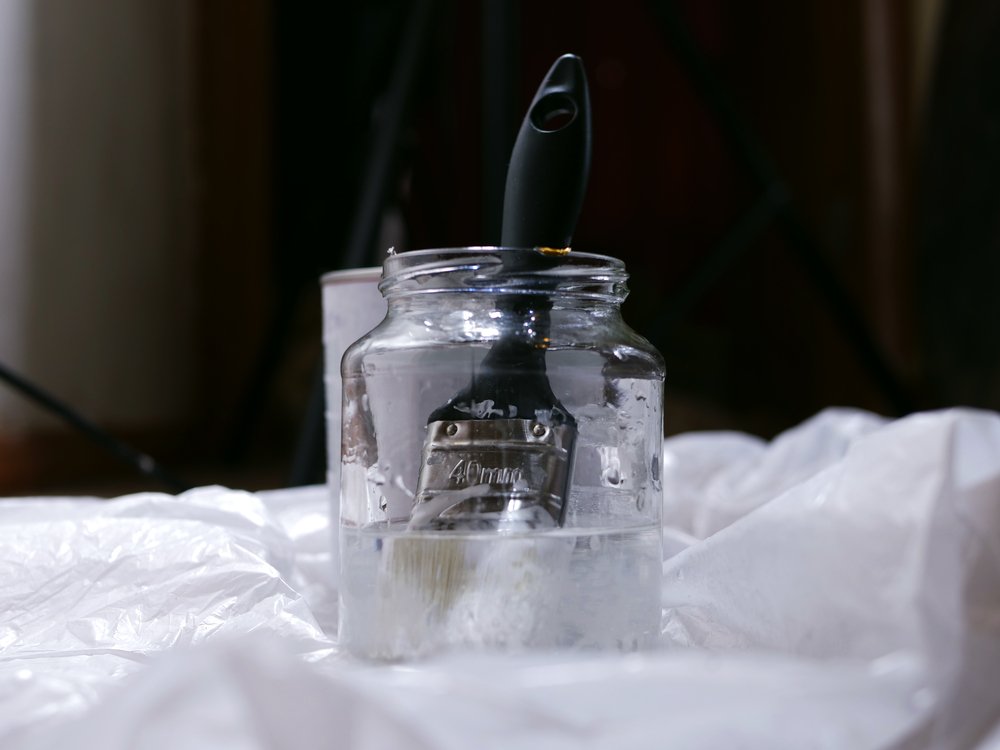
- Pour your cleaning solution into a container and immerse the brush so the bristles are covered entirely. A jam jar works well for 2-inch brushes. For wider brushes, cut the top off a 4-pint milk container.
- Leave the brush to soak for 10–20 seconds while the cleaning solution penetrates the paint. Work the bristles between your fingers and run through with a brush comb to remove stubborn paint.
Pro Tip: Pressing the bristles against the inside of the container draws out the paint held at the base of the bristles near the ferrule (the metal strip where the hairs attach to the handle).
4. Wash Brush
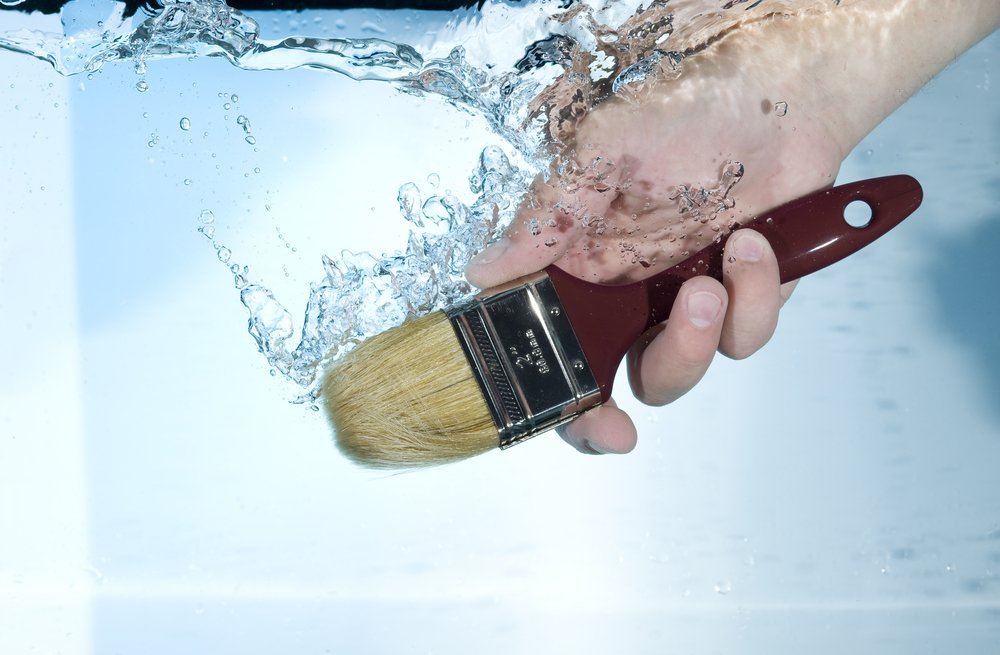
- Wash the brush in warm, soapy water and shake it dry. If you still have pigment on the bristles, repeat step 3 until the colour is gone, and then rewash the brush. If cleaning the brush in the sink, ensure the bristles point downwards, away from the tap. This approach helps the brush hold its shape.
- When the water starts to run clear, turn off the tap and squeeze the bristles to wring out the excess water.
- Press the brush onto a clean rag to ensure the bristles are as dry as possible.
Pro Tip: To shake the brush, place the handle between both palms and rub your hands back and forth like you’re warming them on a cold day. Ensure you do this outside because it can be messy.
5. Best Way To Remove Excess Water
Before storing your brush, remove excess water from its bristles, preventing them from hardening and drying in clumps.
A brush and roller spinner comes in handy here. There are two types you can buy: manual and powered. The manual version has a handle you pump up & down to spin the brush, whereas the powered version attaches to a drill chuck.
The video below shows you how to use a manual paintbrush spinner:

Pro Tip: Spin the brush inside a bucket to prevent getting wet.
How To Clean Paintbrushes — Removing Hardened Paint
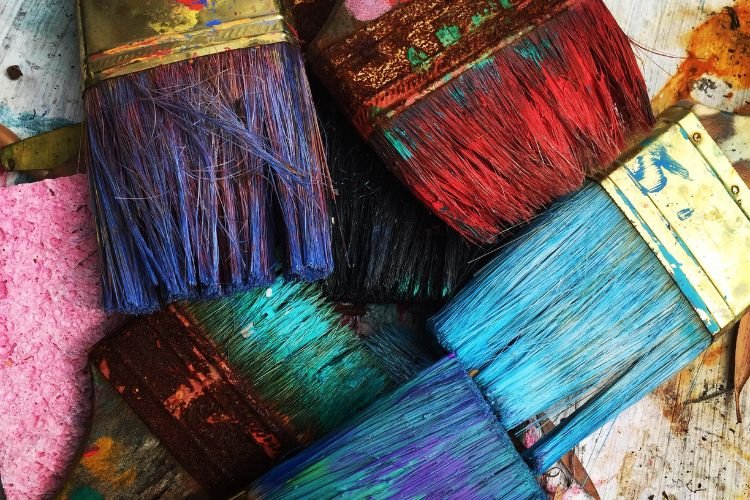
Hardened paint is tough to remove, but you still have two options — leaving the brush to soak and using a non-chemical solution.
1. Leave Brush to Soak
Soak the brush for a couple of hours in white spirit for oil-based paints or warm, soapy water for water-based paints.
After two or three hours, lift the brush from the cleaning solution and run the brush comb through the bristles to remove paint chunks.
You may need to repeat this process several times before removing all the hardened paint.
2. Use a Non-Chemical Solution
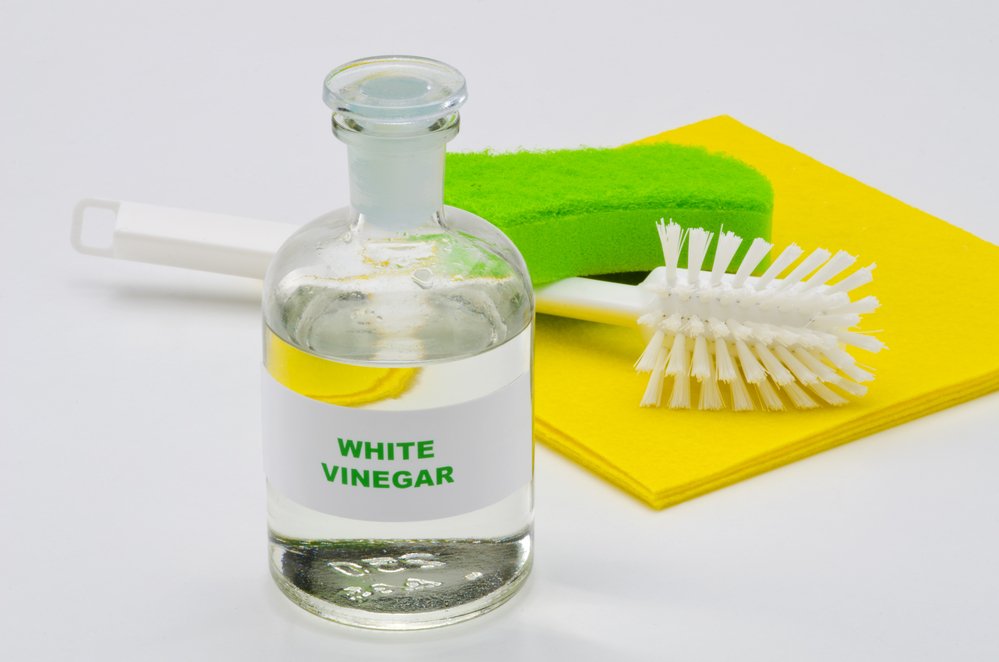
If you care about the environment, use the non-chemical remedy below:
- Boil white vinegar in a saucepan and leave it to cool. Once cool, pour it into a container.
- Place the brush in the cooled vinegar and leave it to soak for 30 minutes.
- Remove the brush and run the comb through it to remove hardened paint.
- Repeat this process until the brush is clean.
Boiling improves the vinegar’s potency by concentrating the ingredients. It also removes the strong odour and any contaminants it may contain.
The video below shows you how to use the vinegar technique:

How To Store Paintbrushes
The best way to store brushes is by hanging them from a pegboard in your garage/workshop.
This approach ensures the bristles remain straight as they dry and allows air to circulate, removing the possibility of mould or mildew.
If you don’t have a peg board, give the bristles one final run-through with a brush comb to straighten the strands. Next, lay it flat, preferably inside its original packaging, to preserve the bristles.
Pro Tip: If you don’t have the original packaging, wrap the bristles in old newspapers instead.
Final Thoughts
Paintbrushes risk becoming another throw-away item in our consumer society, but if you follow the steps above, your favourite brushes will be fit for purpose several years later.

